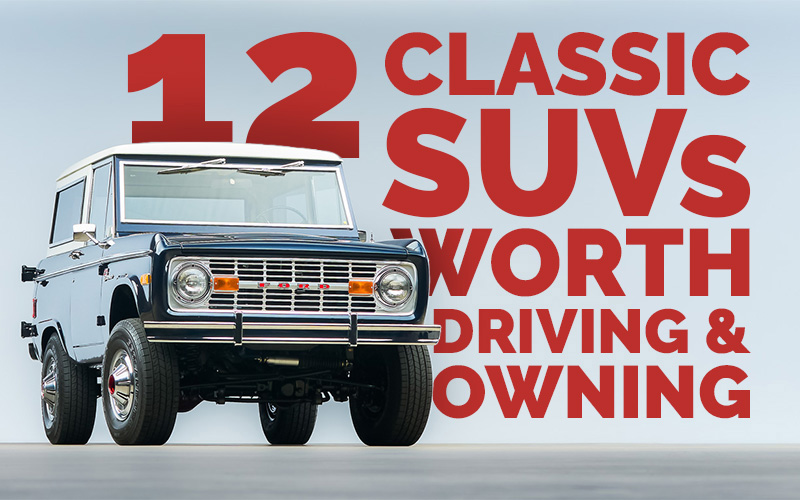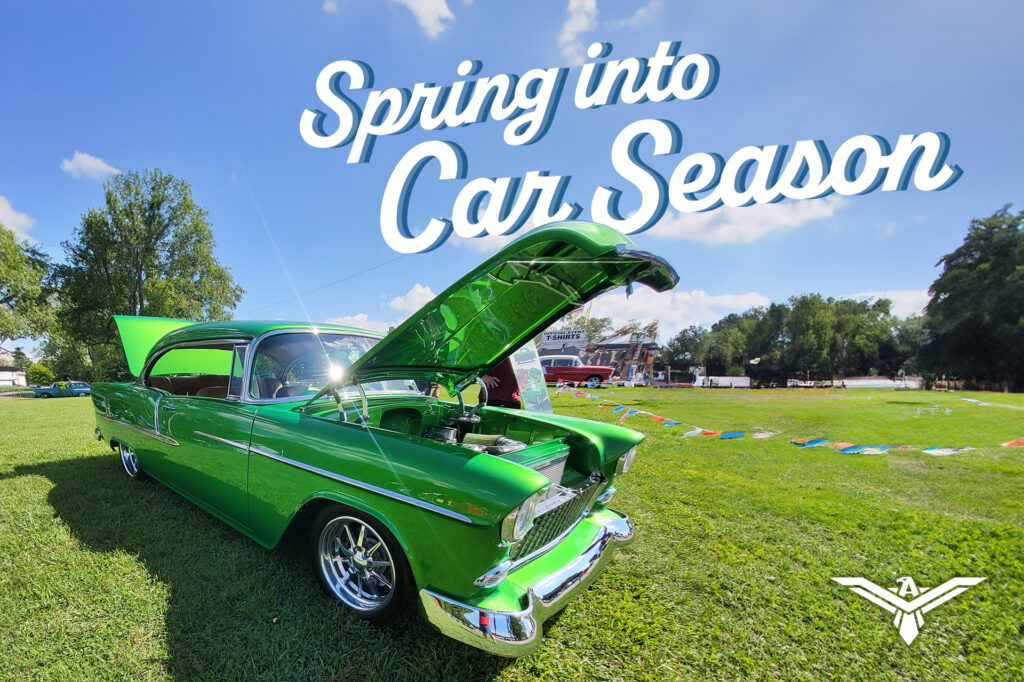What is considered to be the first classic SUV? That question is too hot to touch! You’d be better off walking into a classic car meet and loudly asking, “What’s the best ponycar?” But here’s a statement we feel totally safe in making: by the time automakers and the media started talkingabout sport utility vehicles, they had already been around for a long time. But just how long and what was the first classic SUV?
As more and more drivers choose a modern SUV as a daily commuter, interest in vintage SUVs is also making similar strides. A classic SUV can be a stylish way to get to the ski lodge, vacation home, or just to show off at the latest cruise-in. While many vintage SUVs are relatively simple and easy to maintain, others are as exotic as the African jungles where they built their reputations.
Before we get to our list of twelve classic SUVs worth driving and owning, it’s worth taking the time to share a few classic SUV tips. First, not all classic SUVs are actually four-wheel-drive. So if you need or desire that feature, be sure to confirm your vehicle of interest is capable. Next, make sure you choose a classic SUV with the right level of weather protection. Soft-top Jeeps and Land Rovers can be a lot of fun in the summer but you will find them less comforting during the winter. Lastly, if you’re looking at an imported vintage SUV that wasn’t originally sold in the United States, be sure you can get the appropriate title and paperwork for your state. That goes triple for “Defender title swaps,” which will be further discussed below.
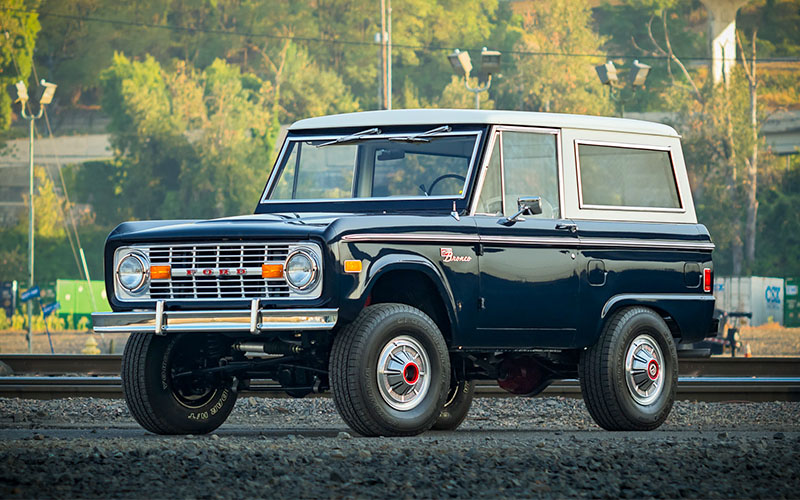
1966-1977 Ford Bronco
The first generation Ford Bronco, meant to take the fight to Jeep’s “CJ” line, is having a bit of a moment right now. Classic Bronco values are high and so is demand thanks, in large part, to Ford’s introduction of a brand new Bronco (based on the Ranger truck) that copies the unique square-rigged style of the 1966 original. While it’s possible to spend $200,000 or more on a fully restored Bronco or one of the “resto-mod” examples being rebuilt with modern powertrains and conveniences, there’s still room at the bottom of the market for mechanically-capable buyers. There were originally three body styles: an open “roadster”, a single-cab pickup, and a wagon. Most classic Bronco enthusiasts would be happiest with the wagon, which is the most commonly available. What’s it like to drive? Think sixties pickup, and shrink it a bit. That means a noisy, rough-riding, high control efforts, and very little in the way of comfort or convenience driving experience. Chances are, you’ll love it.
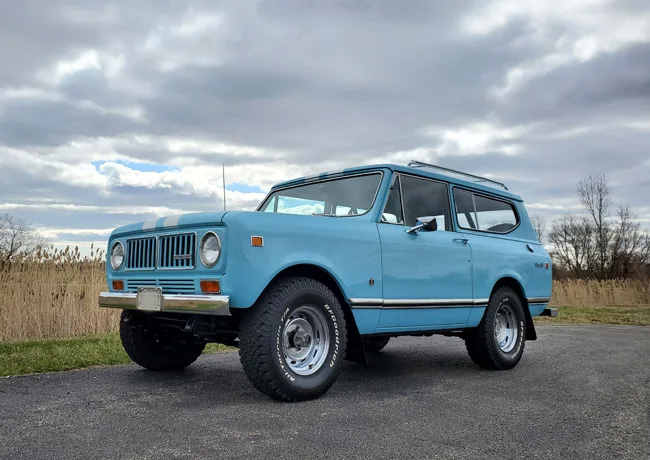
1960-1980 International Harvester Scout
Take one look at a classic Scout, and you’ll see where Ford got a lot of their ideas for the Bronco. About twice as many were sold, over a much longer production run, and with a lot more variety. We’re talking open top, closed top, pickup truck, factory camper, and even the long-wheelbase Terra and Traveler. Want to go full minimalist? The Super Scout had soft doors, just like a Jeep CJ. Scouts still hold up well in modern traffic, particularly the V8 models. The Scout is one of relatively few vehicles where you could literally double the size of the base engine; most models came as standard with the 152-cubic-inch Comanche I-4 that was precisely half of a 304 International Harvester V8, which was also available in later models. There was even a diesel, provided by Nissan, but you’ll have a devil of a time finding one now. A surprising number of Scouts left the factory as two-wheel-drive trucks, but even those are remarkably capable in the tough stuff. If you’re interested in a Scout, now might be the time to buy; after sixty-three years, IH’s groundbreaking SUV is finally getting the respect it has always deserved.

1958-1971 Land Rover Series II and Related Models
Unlike the Jeep that inspired it, the original Land Rover earned no wartime laurels since it arrived too late to join World War II. Instead, the small off-road vehicle made its reputation in what were then called “the colonies” and Africa – and the Series II was the model that carried most of the load. Not widely sold in the United States upon its introduction, the Series II has become popular as a legal import thanks to the “25-year rule” for nonconforming foreign vehicles. (Note we said legal import; we’ll come back to that later.) It was available in a simply bewildering array of body styles, from the 88-inch-wheelbase wagon to “forward control” variants that look like modern box vans.
These are hugely romantic, and usefully simple, vehicles. Designed to be maintained by amateurs, it’s possible to completely overhaul the engine in a Series II without removing it! Don’t confuse “durable” with “reliable,” however. You’ll get to know the British Standard Whitworth very well, should you decide to buy one. However, the Land Rover didn’t have everything its own way in Africa.
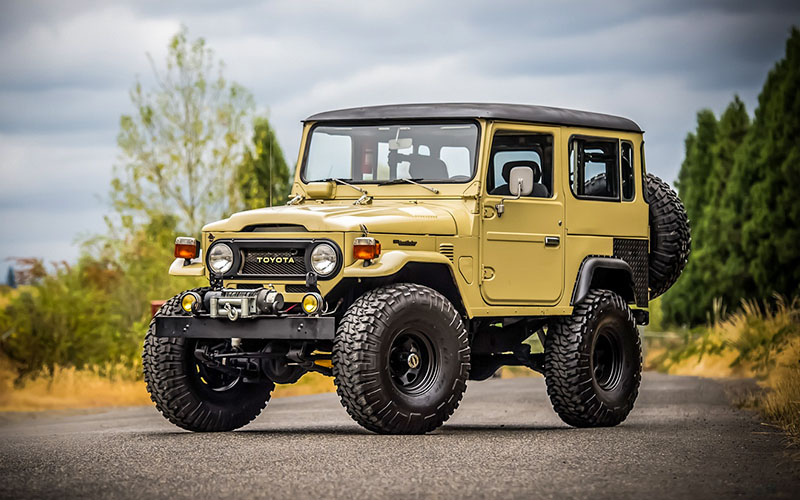
1960-1984 Toyota Land Cruiser “FJ40”
Toyota’s first attempt at a truly global vehicle was the Land Cruiser, and it right next to the Land Rover. Most people will agree that the Cruiser was better-made than the Rover, at the cost of some styling and character.
The range of models was far simpler than what was offered by its British counterpart; we’re talking hardtop three-door and five-door wagons for most of the production run, and with the occasional soft top. It’s very hard to kill a Land Cruiser; the original engine is best known as a “Stovebolt Six” and was put together by people who were serious about their jobs. And, the optional diesels were even tougher. Compared to Land Rovers, these rugged Toyotas have one fatal flaw: the bodies are usually steel, rather than aluminum – but the aftermarket has an answer to this, as it is now possible to rebuild your FJ40 with an aluminum body. Did Toyota expect that people would be doing ground up FJ40 builds six decades later? Probably not, but that’s the unintended consequence of building an SUV this good.
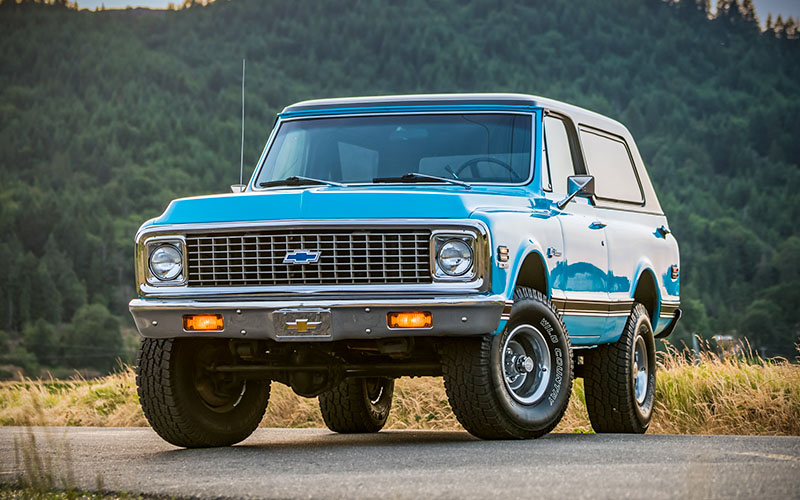
1969-1991 Chevrolet K5 Blazer and GMC Jimmy
General Motors chose not to get into the small-SUV dogfight of the late sixties; they just didn’t think the market was that important. Instead, their 1969 Blazer was simply a short-wheelbase pickup truck with a removable soft top. It has a foot more wheelbase than the 1966 Bronco, and it’s two feet longer overall. Most of that extra size is put to excellent use, and the Blazer is more pleasant to operate than the smaller American SUVs pretty much anywhere the road is paved. Off-road, the Blazer’s extra width, length, and weight aren’t very helpful.
Most of the Blazers on the market are second-generation examples from 1973 forward. They’re a joy to operate and ride very well. As with any short-wheelbase truck, hard turns at higher speeds are to be avoided. But relatively speaking, the big Blazer is a safer bet in those conditions than any of the compact SUVs against which it competed.
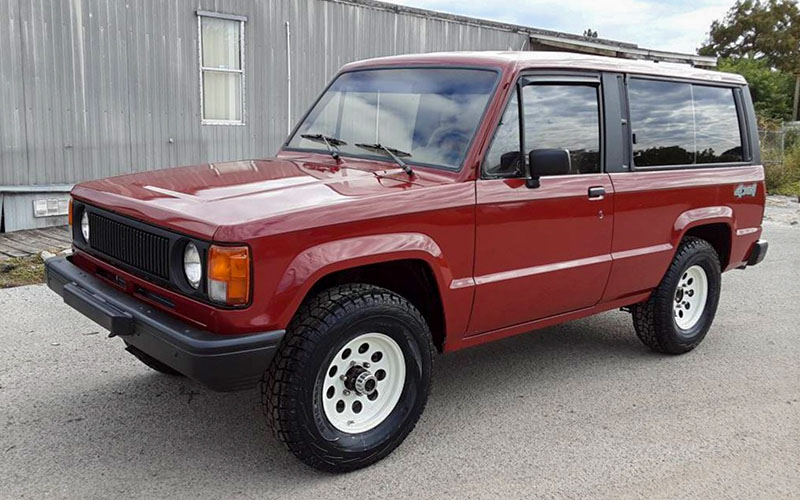
1981-1991 Isuzu Trooper
Criminally overlooked by a lot of classic SUV fans, Isuzu’s first generation Trooper has a lot to offer. It was a substantially modernized, and very reliable, Japanese take on the early Bronco and Scout. And it’s about the same size. Most surviving Troopers are three or five-door hardtops, powered by a hard-working inline four engine that is adequate enough for modern freeway use. A GM-sourced V6 improved the Trooper’s reliability in later years. Avoid the diesel unless you really want one. With a style all their own, the Trooper is a great left-field choice and often available at a discount price.
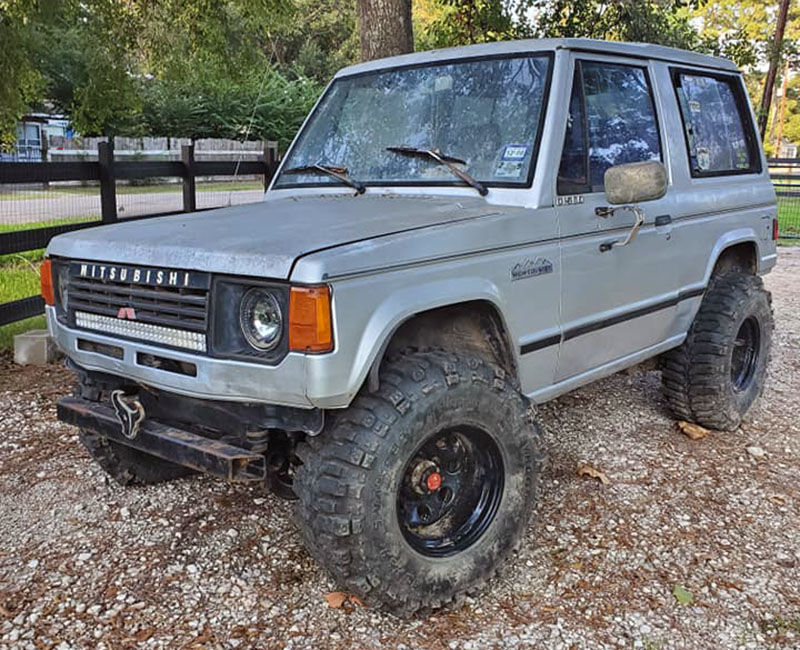
1982-1991 Mitsubishi Montero/Pajero and Dodge Raider
Arguably a bit better thought out than the Trooper in many ways, the Montero is a solid competitor to the J70 Land Cruiser of the same era. It’s roomy, reliable, and even a bit luxurious if you choose the right model. Globally popular under the Pajero nameplate, it’s the only Mitsubishi a lot of people have ever seen, particularly in Africa.
Want to really turn some heads, or at least confuse a few people at your local car show? Try a Dodge Raider. This short-lived badge-engineered variant of the three door Montero was sold in domestic dealerships under the same agreement that brought in everything from the Plymouth Colt to the Chrysler Conquest. Just don’t expect your Dodge dealership to have parts!
1970-1996 Range Rover
Few vehicles have changed so radically in both intent and configuration in a single generation. Introduced as a bare-bones two door model right after Woodstock, the “100-inch station wagon” was an attempt to build a modern Land Rover using everything that had been learned about suspension design and passenger comfort in the years since 1948.
It was a smashing success – and it became synonymous with old money, as British aristocrats found that their Range Rovers would handle the trip from their rural estates to London with more aplomb than even a Silver Shadow or Bentley T2. Land Rover rushed to re-engineer the 100-inch station wagon for a more upscale clientele as well as for American consumption. The leather-trimmed, long-wheelbase, five door variants that ended production in 1996 may have superficially resembled the 1970 original, but they were basically high-riding luxury cars.
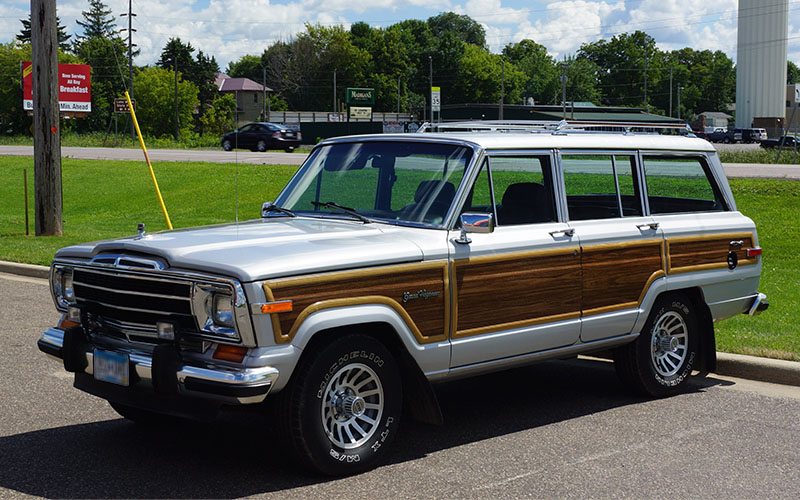
1984-1991 Jeep Grand Wagoneer
Based on the 1963 Jeep Wagoneer, the 1984 Grand Wagoneer was an attempt to take a bit of Range Rover’s customer base with minimal development costs. It should have been a failure, but something about the Grand Wagoneer just felt right to upscale buyers from Martha’s Vineyard to Montana.
That appeal hasn’t diminished one bit and today the big Jeep with the fake wood is the very soul of upper middle class, respectability. You can buy a fully restored one from a specialist or try doing it yourself. Either way you’ll adore the retro interior and timeless styling.
1984-2023 Toyota Land Cruiser Series 70
Wait a minute – isn’t this a list of classic SUVs? What’s a brand-new vehicle, one that you can buy in showrooms, doing here? Well, it’s not quite that simple. Most of the showrooms that can still sell you a brand-new Series 70 Land Cruiser are in Africa, the Middle East, or Southeast Asia – places where the unequaled ruggedness and track record of the toughest-ever Land Cruiser can make the difference between life and death.
That doesn’t mean you can’t get one, however. There’s always good stock available of right-hand-drive imports from Japan that meet the “25-year-rule” allowing older vehicles that do not meet Federal standards into the country. (Your state may feel differently, so talk to your importer before you write a check.) Drive one, and you’ll see why it’s the default choice from Lagos to Jakarta.

1990-2016 Land Rover Defender 90, 110, and 130
These final variants of the original Land Rover design were often showroom paperweights when they were new, selling at big discounts when they could be sold at all – but that didn’t last long. Today, a “classic” Defender is worth big bucks. As a white 110 wagon, it has fresh-from-the-safari credibility: as a soft top 90, it’s straight out of “Beverly Hills, 90210.” North American variants were powered by the classic Buick-derived Rover aluminum V8 and are a joy to drive.
Now here’s the tricky part: Defenders aren’t worth nearly as much in the rest of the world, because they were sold in much greater numbers and often in much more modest specification. So it’s been popular over the past 15 years or so to buy a newer Defender from overseas then title it with documentation from a worn-out Series II Land Rover, which can be had much cheaper and easier in the States. As tempting as this might be, don’t try it. The Feds are now aware of the scheme and you can lose more than just your shiny classic Rover.
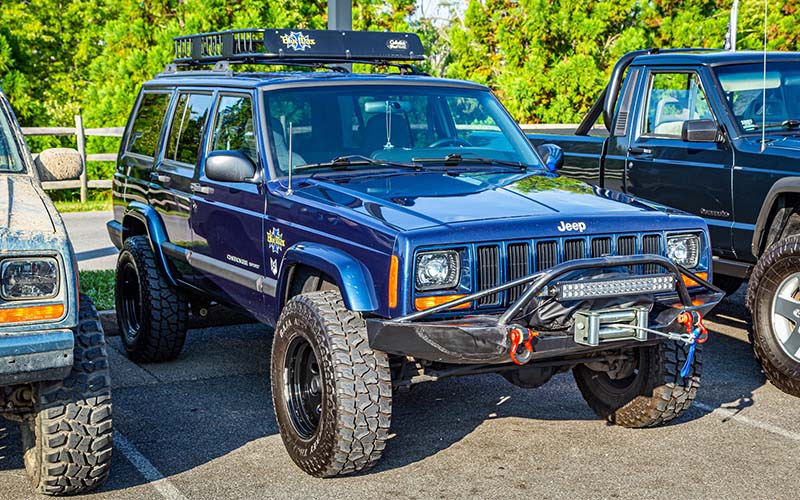
1984-2001 Jeep Cherokee “XJ”
The squared-off, compact Cherokee was that rarest of automobiles at its introduction. a truly original idea. It had an option of four doors when the competition only offered two. It offered a variety of four-wheel-drive systems, including one that was designed for on-road use. And it was built with a unibody frame rather than a traditional body-on-frame construction. Revolutionary, in every sense of the word. Customers responded first by making it a huge hit, and then by showing it so much love that Chrysler had to keep selling it next to the Grand Cherokee that was meant to replace it in the market.
Few vehicles of any type have ever inspired the sort of fanatical loyalty that the Cherokee evokes easily in a broad spectrum of drivers. It’s worth your time to see why.

Bonus: 1929 Ford Model T Station Wagon
It’s odd to think of the Model T Wagon, which was available in factory-bodied form from 1929 onwards, as an SUV – but it meets the definition almost any way you slice it. Designed for a country that was largely bereft of paved roads, the Model T wagon took people places that had never seen an internal combustion engine before. And it had a true low range gear, something that can be a little hard to find on modern SUVs. In this, as in so many other ways, Henry Ford was ahead of his time.
